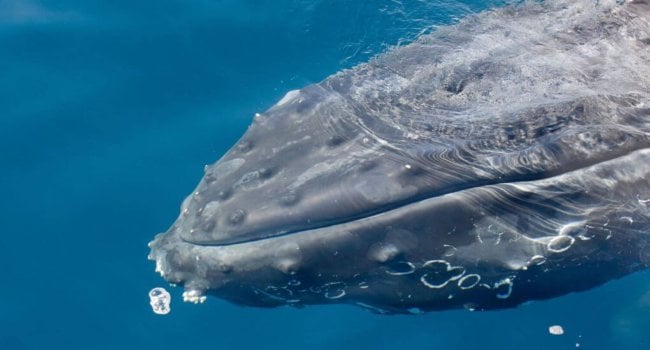- Get link
- X
- Other Apps

No, I will not say that baleen whales are very large. You already know this. As well as the fact that a blue whale weighing 13-14 tons is the heaviest creature on the planet. But I bet that you do not know why these whales that feed through the filter are so big. Because even scientists do not know this. In any case, did not know until today. A group of scientists proposed an enthralling theory in the Proceedings of Royal Society B: By combining the fossil record and phylogenetic work (that is, determining the relationship of species to each other), they found that baleen whales probably became gigantic just 3 million years ago - a trifle in a grand evolutionary pattern - and this transformation was probably caused by climate change. This, of course, makes us think about the problems with which giant animals can collide with the warming and acidification of the oceans of the Earth.
Moustached whales - who swallow a huge amount of water and filter out tiny creatures like krill - there are about 30 million years. For most of this time they were very modestly stacked, remaining 10 meters long or so, that is, three times smaller than the modern blue whale. In the end, being small is convenient. At least it's easier to open the mouth when it's small.
At the beginning of the glacial period, about 3 million years ago, the oceanic system began to change greatly on a large scale. Ice sheets expanded to the north, and flows sucked nutrients into the sea. The increase in wind upwelling (the rise of deep water to the surface) brought even more nutrients from the depths: when the wind blows off the upper layers of the water, the deep ones tend to replace them. This led to the flowering of plant phytoplankton, which, in turn, accelerated the multiplication of zooplankton-krill-which feeds first. Whale food began to gather in certain places at certain times of the year.
Large dimensions would have been an advantage for whales in the midst of this climate transformation due to several factors (this trait developed independently in different bloodlines of baleen whales, confirming the development advantage). First, large whales changed along with the food chain, growing to such a size that they placed themselves outside the reach of predators. The large mouth also more effectively captured zooplankton. If you can accumulate more fat, you can migrate further, unlike small whales that hang out in the surrounding waters with small concentrations of plankton.
"We believe this environmental explanation is behind the change in body size," says paleobiologist and co-author Nick Penson of the Smithsonian University. "It explains not only the origin of the very large, but also the disappearance of very small baleen whales, which today are represented in this pedigree only by the pygmy whale." Smaller whales simply could not compete in the new world order, but why could the whale-pigmy - this is a mystery.
But could not the whales become big simply because they could? After swimming in the water - it's not like walking with a large body on the ground. "When you study data, it's out of the question," Penson says. "When a whale enters the water and becomes very large - no, it's not." In the end, baleen whales lived in the water tens of millions of years before becoming giant.
But what research shows for sure, is the extraordinary nature of this moment in the natural history of the Earth. Just imagine what is needed to maintain not only blue whales, but also other baleen whales, for example gray whales. They eat while traveling for thousands and thousands of nautical miles. "There was no time in history when such large predators could find as much biomass in the fertile oceans," says the vertebrate paleontologist Erich Fitzgerald, who did not participate in the study. "There is simply no analogue in history. It can be traced back to the very end of the dinosaur era, 66 million years ago, and only the last 3 million years will be truly unique. "
People can destroy all this. Small changes in the temperature of the oceans may have a cascading effect on ecosystems. If the currents change or the cold upwelling waters stop taking nutrients to the surface, the phytoplankton will not bloom, and zooplankton will not feed. If there is no zooplankton, baleen whales will not have anything to eat. If the bloom shifts to other parts of the sea, and whales can not find it, their size advantage will suddenly become a burden.
Climate change has created giants, and although it is too early to talk about how it will affect them in the coming decades, the giants are certainly in a dangerous situation. Large creatures are at the forefront of evolution by definition. Yes, science has found that large whales have become due to climate change. Now it remains to be convinced that further climate change will not hurt them.
The article is based on materials .
- Get link
- X
- Other Apps
Comments
Post a Comment